Beam Design Settings
Design Settings for Sub-Tabs
After the steel beam modelling is completed, double click on the element to enter its properties.
3 new sub-tabs will appear in the steel beam menu. These tabs contain adjustments for analysis and design.
TDY 2018 Tab
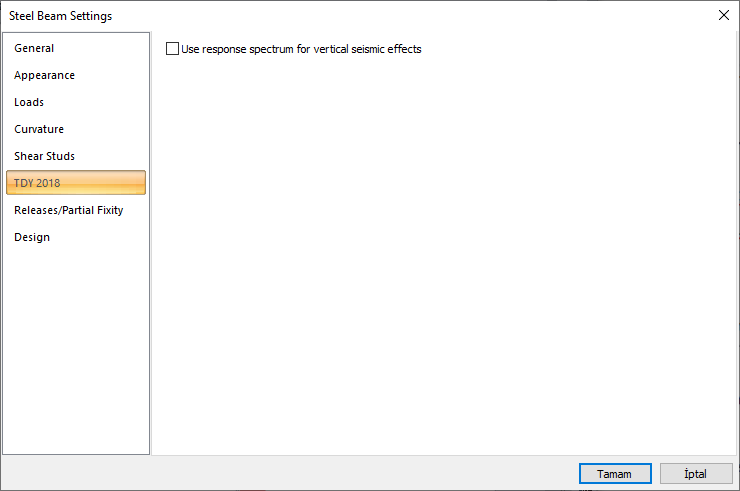
Specifications |
|---|
Use response spectrum for vertical seismic effects  If it is marked, the calculation is made with the vertical design spectrum in accordance with 4.4.3.1 and EdR (Z) is calculated for the calculation of the vertical earthquake effect. |
Releases/Partial Fixity Tab
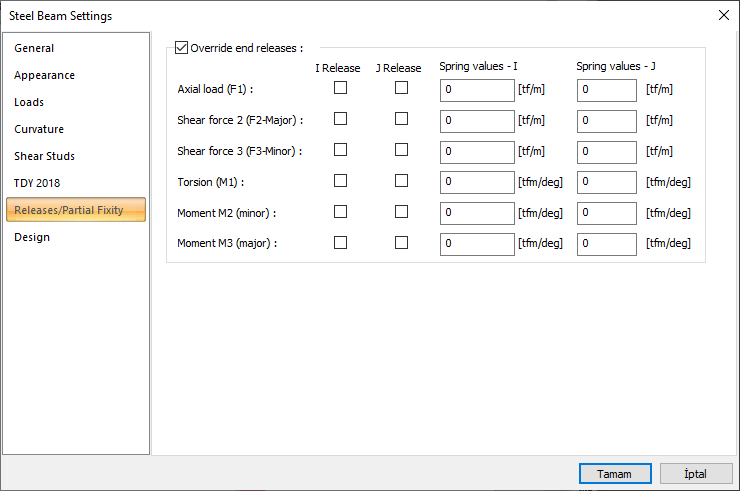
Specifications |
|---|
Override end releases  If it is marked, end releases and spring values that are entered at the start and end points of the element are become active. |
I release  If the axial force for the starting point of the element 2-direction shear force, 3-direction shear force, torsion, 2-direction moment and 3-direction moment are indicated, the corresponding force will be 0 at the starting point. |
J release  For the end point of the element, axial force, 2-direction shear force, 3-direction shear force, torsion, 2-direction moment and 3-direction moment are indicated, the corresponding force will be 0 at the starting end. |
Spring values - I 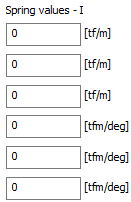 The spring coefficient is entered for the starting point of the element. Units can be changed by clicking the right button in the box. |
Spring values - J 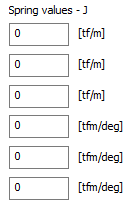 The spring coefficient is entered for the end point of the element. Units can be changed by clicking the right button in the box. |
Design Tab
The parameters used in the design are intervened in the Design tab. If a mark is placed in the box, the coefficient written in the box is used in the design. If no mark is placed in the box, the programme automatically determines these coefficients and use them in the design.
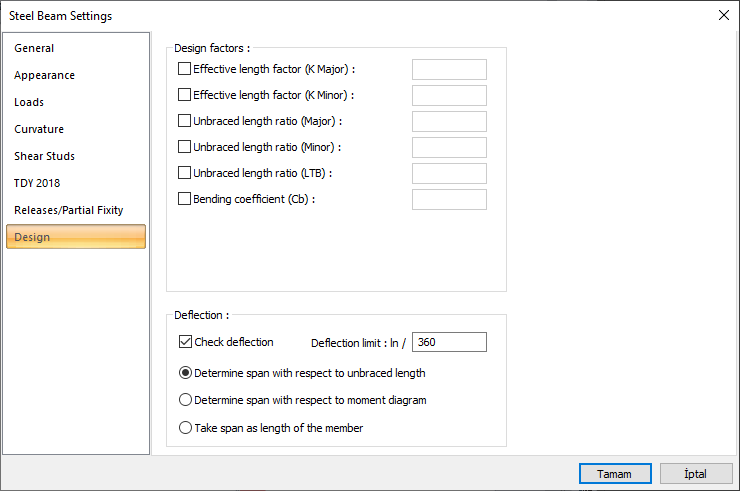
Specifications |
|---|
Effective length factor(K major)  Effective length factor for major axis is given. |
Effective length factor(K minor)  Effective length factor for minor axis is given. |
Unbraced length ratio (major)  The ratio of the length between two elements connected to the element in its strong direction to the entire element length is given. |
Unbraced length ratio (minor)  The ratio of the length between two elements connected in the weak direction to the entire element length is given. |
Unbraced length ratio (LTB)  The ratio of the length between two elements connected to the element for the respective direction to the entire element length to be used in the lateral torsion buckling calculation is given. |
Bending coefficient (Cb)  The moment correction coefficient is calculated according to the Steel Structures Regulation Equation 9.1. |
Check deflection/Deflection limit:ln  It is the member-based limit value specified in the relevant Steel Structures regulation used in the design. The program does not defıne automatically type of the structural member, such as cantilever beams. The limit value must be changed by the user according to the situations where the beam is used. |
Determine span with respect to unbraced length  The length between the two members to which the relevant member is attached or placed uses the clear distance in deflection calculation. It is preferred in hinged connections. |
Determine span with respect to moment diagram  The equation used in deflection calculation changes according to the shape of the moment diagram of the relevant member. For this reason, cantilever beams should be used in beams with one side is fixed and the other one is hinged. |
Take span as length of the member  It provides deflection calculation over the full length of the relevant element. |
Control is given in the steel design - beam - details section after analysis and design.
Next Topic
